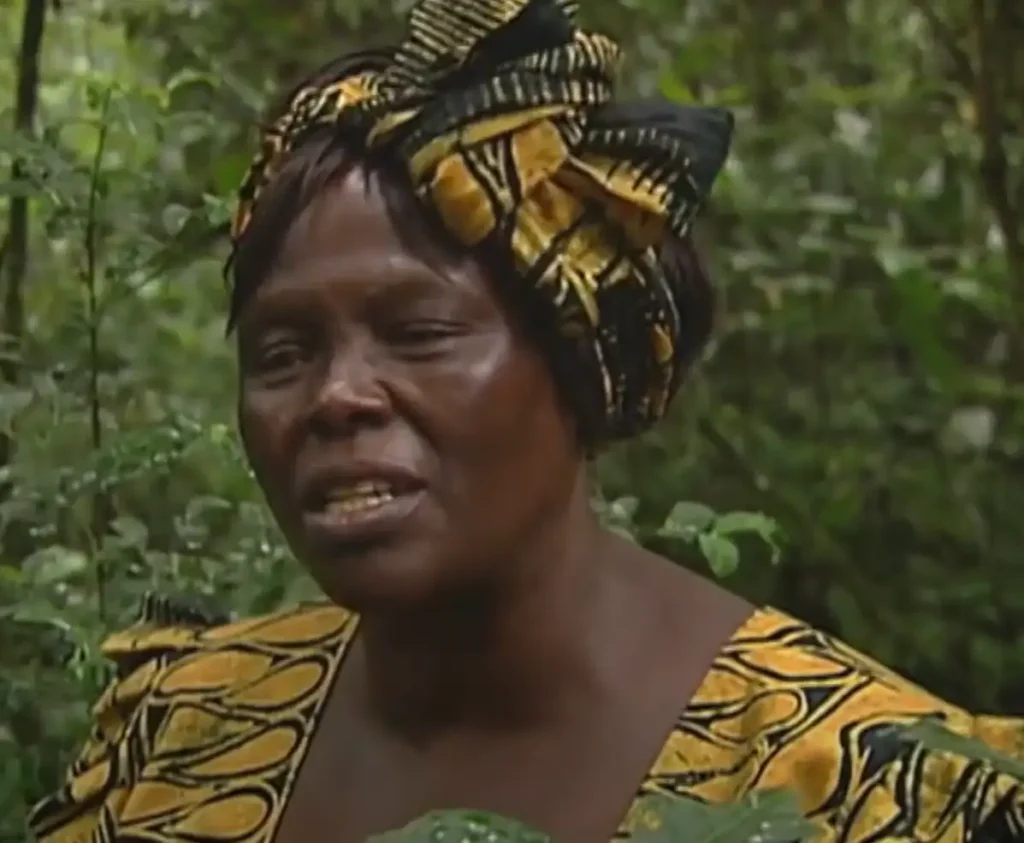Where We Began
- For most of human history, there weren’t many people.
- We didn’t have a big negative impact on the environment.
- Since the Industrial Revolution (about 1760-1900), our actions have hurt the planet.
- Industrial Revolution was a period when people started using machines to make things, which caused a lot of pollution and damaged the environment.
- We’re destroying animal homes, making animals go extinct, and polluting the air.
- Coal power plants are a major source of pollution, releasing gases that cause global warming.
Thinking Big
- People have already made great progress in saving the natural world.
- Conservation projects have saved many animal species from extinction.
- A good example is the giant panda. In the 1980s, only a few hundred were left in the wild.
- Thanks to habitat protection and breeding programs, there are now over 1,800 wild pandas.
- Smart laws and inventions have also greatly improved the quality of our air and water.

Genius: Wangari Maathai
- Wangari Maathai (1940-2011) was an activist from Kenya.
- She started the Green Belt Movement.
- This group encouraged local people, especially women, to plant trees.
- Planting trees helped with environmental problems:
- Reducing deforestation (cutting down forests).
- Fixing damaged habitats.
- Providing income for local people.
- Since 1977, the Green Belt Movement has planted over 51 million trees in Kenya.
- Maathai won the Nobel Peace Prize in 2004 for her important work.
Research other species saved from extinction in the 20th century, like:
- Sea otter
- Blue whale
- Siberian tiger
- Peregrine falcon
What made them endangered?
How were they saved?
Research an animal currently endangered.
How can we protect it?
Sea Otter
- Endangered: Hunted for their thick, valuable fur during the 18th and 19th centuries, nearly wiping them out.
- Saved: Protected by the International Fur Seal Treaty of 1911, which banned hunting. Conservation efforts and reintroduction programs helped their population recover.
Blue Whale
- Endangered: Hunted on a massive scale for oil and meat by commercial whaling ships. By the mid-20th century, their population had dropped by up to 99%.
- Saved: The International Whaling Commission (IWC) placed a global ban on commercial whaling in 1986, which has allowed their numbers to slowly increase.
Siberian Tiger
- Endangered: Habitat loss due to logging and poaching for their bones and fur.
- Saved: Russia created protected areas, and stricter anti-poaching laws were enforced. Local communities and conservation groups also played a key role in monitoring and protecting the tigers.
Peregrine Falcon
- Endangered: The widespread use of the pesticide DDT caused their eggshells to become thin and fragile, breaking before chicks could hatch.
- Saved: The use of DDT was banned in the U.S. and many other countries in the 1970s. Captive breeding programs released falcons back into the wild, leading to a strong recovery.
Currently Endangered Animal: The Vaquita
The Vaquita is a type of porpoise and is the world’s most endangered marine mammal.
- How we can protect it: The main threat is entanglement in fishing nets (gillnets) used to illegally catch another endangered fish. Protecting the Vaquita requires an immediate and complete ban on gillnets in its habitat. Efforts are focused on creating gillnet-free areas and developing alternative fishing gear.
